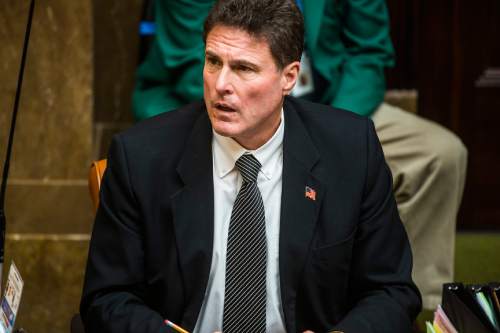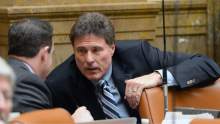This is an archived article that was published on sltrib.com in 2015, and information in the article may be outdated. It is provided only for personal research purposes and may not be reprinted.
An idea is being floated that could resolve a tense standoff between Gov. Gary Herbert and Republican House leaders over how — or whether — to expand Medicaid, with the idea of uniting Herbert's Healthy Utah plan and another being crafted by Rep. Jim Dunnigan.
In concept, the state would adopt Herbert's Healthy Utah plan for two years, at which point it would sunset, unless legislators decide to extend the program.
If it is not extended, the fallback would be a proposal Dunnigan is finalizing that would tap new Medicaid money and an existing state program to give the very poorest Utahns some access to health care.
"We are intrigued [by the idea] and we would look forward to exploring the possibility," said Herbert's spokesman, Marty Carpenter.
Senate President Wayne Niederhauser, R-Sandy, said it would be a way to ensure the state gets the "best bang for its buck," receiving the full federal funding for at least two years.
"That would be most advantageous for the state," Niederhauser said.
Sen. Brian Shiozawa, R-Cottonwood Heights, who is a doctor and the sponsor of Healthy Utah, likes the idea, as well.
"Could I go with that? You bet. I think that would be a very good compromise that we could look at," Shiozawa said. "It would give us two years of increasing economic benefit, gaining all those millions of dollars and two years of data, two years of helping patients, and it would give us the safety, if you will, and the certainty. … It's kind of the best of both worlds."
Dunnigan said how the two programs would be melded together still needs to be worked out.
"We're thinking about it. We hope to be able to come up with some common ground. I think that's yet to be determined," Dunnigan said. "There are still a lot of moving parts."
Legislative leaders and the governor's staff held a series of meetings Monday to explore the possibility. No conclusions were reached.
Herbert's plan would use mainly federal money to cover those up to 138 percent of the poverty level. It would sunset after two years unless it is reauthorized.
Dunnigan's plan uses Medicaid to cover a portion of those making up to 100 percent of poverty and draws on the state's Primary Care Network to give access to bare-bones primary care to those up to the poverty level.
If Healthy Utah passes but is not reauthorized in two years, those below the poverty level would go onto Dunnigan's plan. Those above the poverty level would be moved off over the span of 18 months to avoid cutting off treatment or benefits to those on the program.
Dunnigan's concern is, if Healthy Utah is implemented, those covered by the Primary Care Network would be insured and the program would disappear. If the state tries to re-create it after Healthy Utah lapses, it likely would not be approved by the federal government — because it has limited coverage and a cap on costs.
That could create a new gap in coverage for those below the poverty level, he said.
"Personally, I want to find something that's sustainable," he said, "where we can cover the people in the coverage gap on a long-term basis."
Shiozawa said he hopes the sides can reach an agreement, and he anticipates the governor would be supportive of uniting the programs.
"[The governor's advisers] have that data in front of them and that proposal," Shiozawa said, "and I don't want to put words in their mouth but I'm sure they'd be very favorable to that."
Twitter: @RobertGehrke





